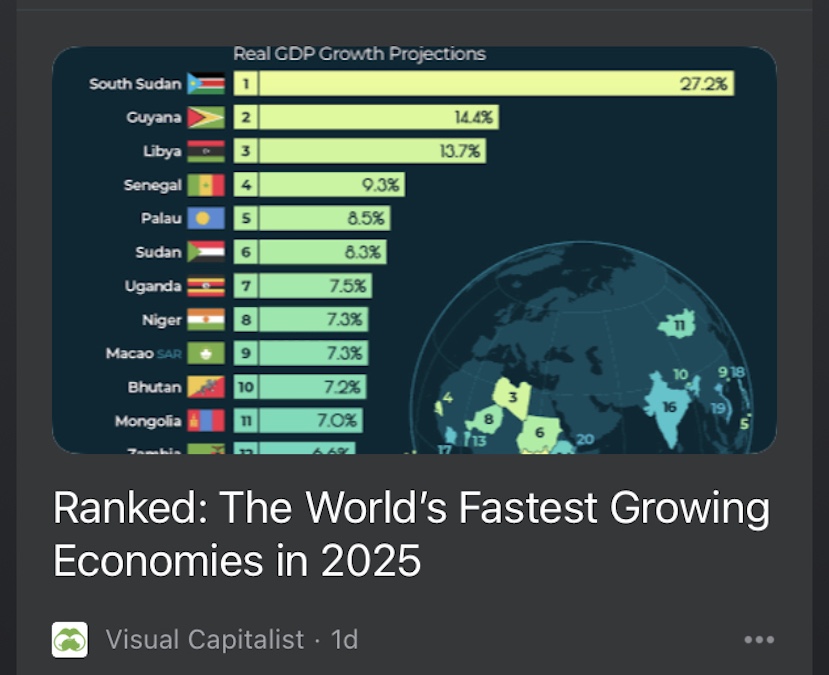The global economy is set for a dynamic year in 2025, with several emerging and developing nations leading the charge in GDP growth. According to a ranking from Visual Capitalist, South Sudan is expected to experience the highest growth, with an astonishing 27.2% increase in real GDP.
Top 10 Fastest Growing Economies in 2025
Based on the projections, here are the top economies expected to see the highest growth:
- South Sudan – 27.2%
- Guyana – 14.4%
- Libya – 13.7%
- Senegal – 9.3%
- Palau – 8.5%
- Sudan – 6.3%
- Uganda – 7.5%
- Niger – 7.3%
- Macao SAR – 7.3%
- Bhutan – 7.2%
Other notable countries on the list include Mongolia (7.0%) and Zambia (6.9%), highlighting strong growth in various regions.
Key Drivers of Growth
Several factors contribute to these nations’ rapid GDP expansion:
- Oil & Natural Resources: Countries like South Sudan, Libya, and Guyana are experiencing significant growth due to booming oil industries and rising global energy demand.
- Infrastructure & Investment: Nations such as Senegal, Uganda, and Mongolia are benefiting from increased foreign investment and large-scale infrastructure projects.
- Tourism & Trade: Locations like Macao SAR and Palau are seeing renewed economic growth as global tourism rebounds post-pandemic.
Challenges and Sustainability
While rapid economic growth is promising, these nations also face challenges such as political instability, inflation, and external market dependencies. For instance, South Sudan and Libya have histories of conflict, which could impact long-term stability. Meanwhile, resource-dependent economies must ensure diversification to sustain their growth beyond oil and commodities.
Somalia’s economy is projected to grow by approximately 3.9% in 2025. This growth rate positions Somalia outside the top 10 fastest-growing economies for that year, as the leading nations are expected to achieve growth rates ranging from 7.2% to 27.2%. While Somalia’s growth is commendable, it does not place the country among the highest global rankings for economic expansion in 2025.
Conclusion
The economic landscape of 2025 is expected to be dominated by emerging markets, particularly in Africa and Asia. These countries’ impressive growth projections highlight global shifts in economic power and the opportunities that lie ahead. However, sustaining this growth will require strategic planning, stability, and diversified economic policies.
What are your thoughts on these rankings? Do you see any surprises or potential risks for these fast-growing economies? Let us know in the comments!
Would you like any refinements or additional sections?
